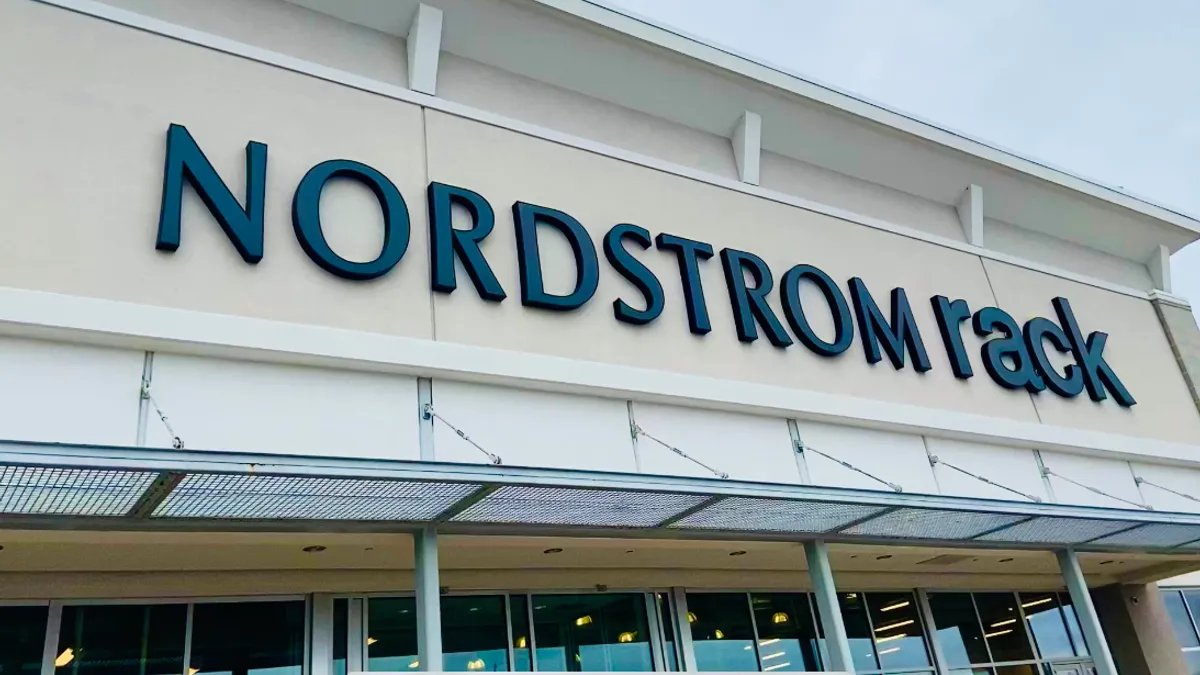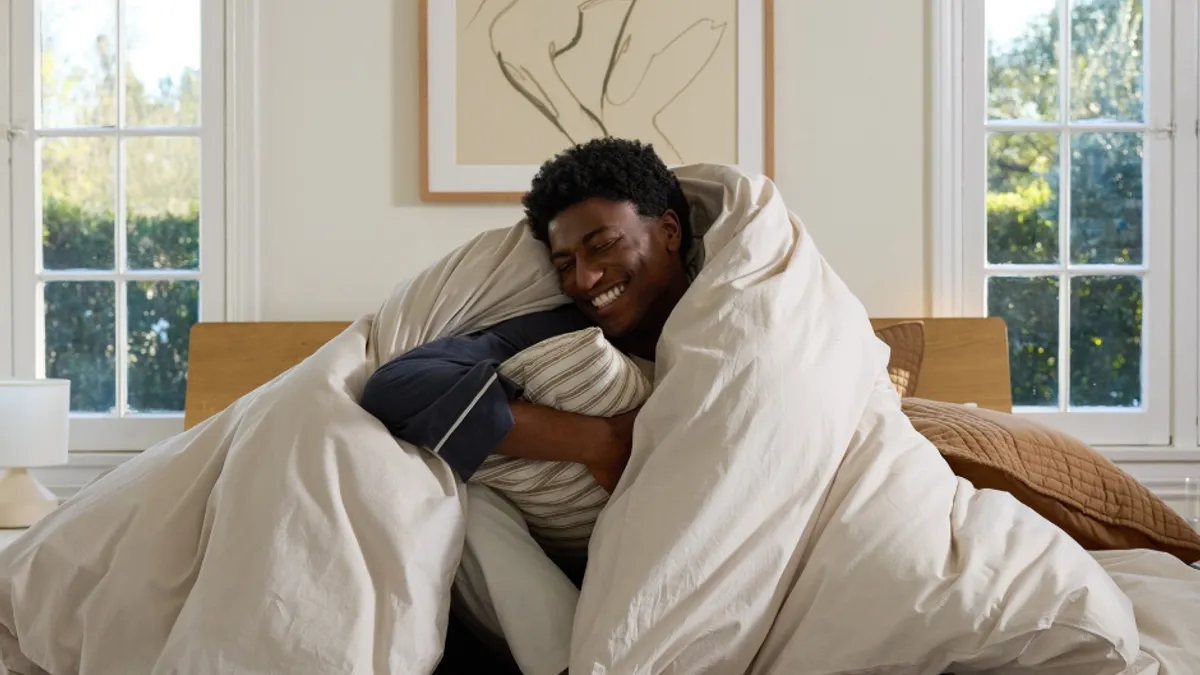Casper changed the way America shopped for mattresses, and now it wants to change the game again.
When the original bed-in-a-box company launched online in 2014, it made headlines by earning more than $1 million in its first month. Often been compared to eyeglass phenom Warby Parker due to both companies’ stunning success as digitally native brands that succeeded in traditionally hands-on merchandise categories, the mattress maker has gone on to raise over $70 million in venture capital, and banked over $100 million in sales in only two years.
But just like Warby Parker, Casper has decided that conquering the internet isn’t enough. In 2013, Warby Parker opened its first stand-alone brick-and-mortar in New York City, and today it has almost 40 locations throughout the U.S. and Canada. Casper, meanwhile, made a strategic decision to partner with an existing brick-and-mortar retailer, rather than open its own shops. To that end, it began a year-long relationship with home furnishings retailer West Elm, Williams-Sonoma’s cooler, younger sibling, in July 2016, allowing consumers to test its mattresses up close and personal in a real-world environment.
Although the collaboration is meant to be limited, it’s also an opportunity for both Casper and West Elm to test out the possibility of a longer-term commitment. Should this arrangement prove suitable for everyone, the engagement could even turn into a marriage. It allows Casper to eschew expensive leases in urban areas where its target audience primarily lives, since West Elm is already there, and the retailer’s storefronts offer access to exactly the kind of customer base Casper is targeting.
“West Elm has over 70 locations, which is an opportunity for us,” Taryn A. Laében, Casper’s chief experience officer and president of global retail and business development, told Retail Dive. “West Elm is very much geared towards an urban dweller, and a city-goer who has a real interest in design.”
Why West Elm? Why Casper? Why now?
Mattresses represent a $14 billion industry in the U.S., and after the recent purchase of Mattress Firm by African company Steinhoff, there may be power in banding — and branding — together. While Casper continues to garner the lion’s share of consumer name recognition in its category, other upstarts such as Leesa, Tuft & Needle, and Saatva have all begun creeping into Casper’s customer base with their own bed-in-a-box versions, and even old-timer Sealy has jumped into the fray with its Cocoon model.
Laében, formerly president of New York-based jewelry company Alexis Bittar (and before that, senior vice president of Kate Spade & Company North America), is looking to expand Casper’s reach on multiple fronts. The West Elm partnership is only part of the strategy: Casper began offering pillows and sheets in December 2015, and as of August 2016, it launched a dog bed collection. Additionally, the company’s expanded its geographic reach and now offers its mattresses in Germany, Austria Switzerland and Canada, alongside a Venice, California pop-up shop which opened for a second time in summer 2016 and currently has no immediate plans to close.
“The business has potential to grow on or offline,” Laében said. “And we’re learning about who our different visitors are. Did they hear about Casper and want to come in? Are they passersby? Did they walk out with a product? We’re learning about what it means to be a part of a community. And we’re learning more about how to interact with customers.”
For its part, West Elm wants the younger audience Casper provides. Rival Ikea, which targets a similar millennial audience, already sells its own brand of mattress, so it makes sense for West Elm to offer a similar option, instead of sending its customers elsewhere.
“Casper has resonated with millennials because of its accessibility, simple ordering and trial period,” Nancy Tsuei, senior vice president of merchandising for West Elm, told Retail Dive. “We’ve found that customers are eager to see and experience a Casper in person, so it’s helped attract new customers to West Elm stores across the U.S.”
Tsuei says that summer was the ideal for a launch, too. “July is a time when consumers are thinking about preparing for fall and back to school, which means an added focus on all things bedroom-related.”
What the analysts think
Casper could play an even bigger role in West Elm’s long-term plans. In late September, the retailer announced it will launch a series of branded boutique hotels in cities like Detroit, Minneapolis and Indianapolis: The rooms and common areas will incorporate design elements reflecting traditional décor and culture from each locale, and guests will also be able to purchase furnishings and artwork found in any room online. Needless to say, those hotels are going to need mattresses, too.
Jerry Epperson, a furniture and mattress industry analyst with Mann, Armistead & Epperson, says the Casper/West Elm partnership is strategic and practical. “West Elm is doing this to get millennials into the store,” he told Retail Dive. “And for Casper’s part, there are certainly people out there that would like to see and touch and lie down on this mattress before they buy.”
But while Epperson believes the arrangement will be mutually beneficial, he also anticipates it will be short-term. “It’ll drive a few people into West Elm, and they’ll sell a few mattresses,” said Epperson. “But I don’t think anyone will get rich off this. And I don’t think it’ll last.”
Epperson also questions how long the Casper phenomenon will continue. “Americans, as a whole, sleep on a mattress that lasts a lot longer than it’s meant to last,” he said, speculating that eventually, most customers will grow beyond their Casper mattresses. “Most mattresses are sold on some sort of health issue, and those get more acute as you age. When you’re young, you can sleep on anything. Casper makes a cute product, and you can tell people you bought it from Casper. When I was young, I could sleep on sofas, but at some point young people will step up.”
That said, disposable mattresses may become more and more common. “People shop for a new mattress every seven years, and younger people shop even more often,” said Laében. “They shop when they move, get married, buy for their guest room, or when their child grows and gets a big-girl or a big-boy bed. And so we’re seeing new customers and loyalists.”
Others share Laében’s optimism for Casper’s future. At an eTail East retail conference presentation in August 2016, Josh Himwich, vice president and general manager at The Bump at XO Group Inc., cited Casper as an example of a company capable of competing with Amazon by virtue of hyper-specialization — identifying a niche focus and pursuing it.
Himwich also pointed to Casper’s success in advertising, calling it “the first to create a millennial brand around sleep” and adding “Casper doesn’t want to own mattresses. They want to own everything related to sleep and your bedroom.”
Laében couldn’t agree more.
“We believe sleep is the last unmined wellness category,” she said. “We’re really excited about tackling sleep as a lifestyle category, and we think it’s a really fresh idea. Casper’s ambition and course is about becoming a lifestyle brand centered around sleep.”






















